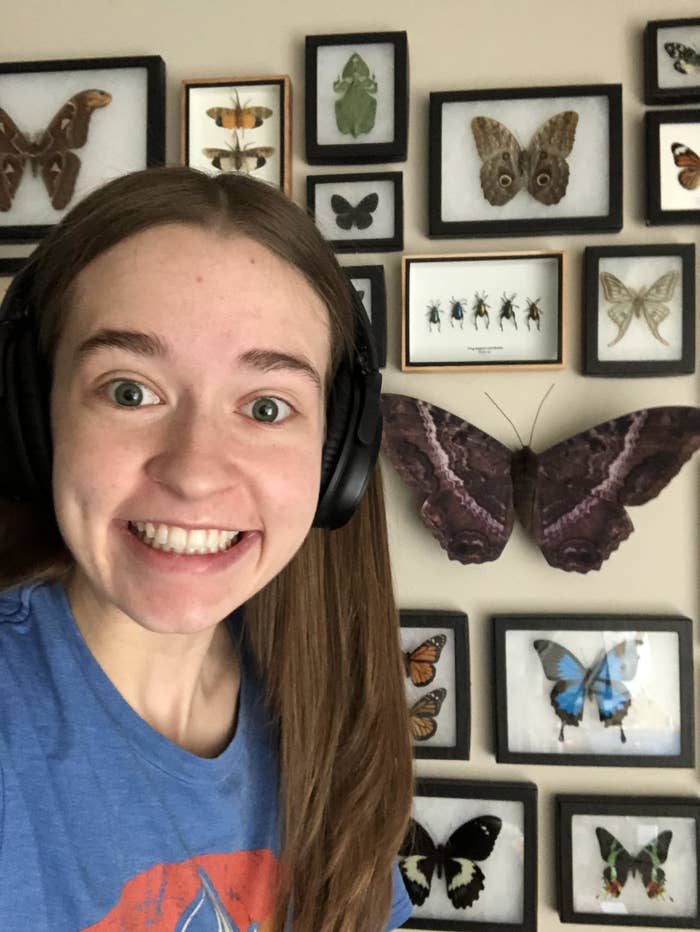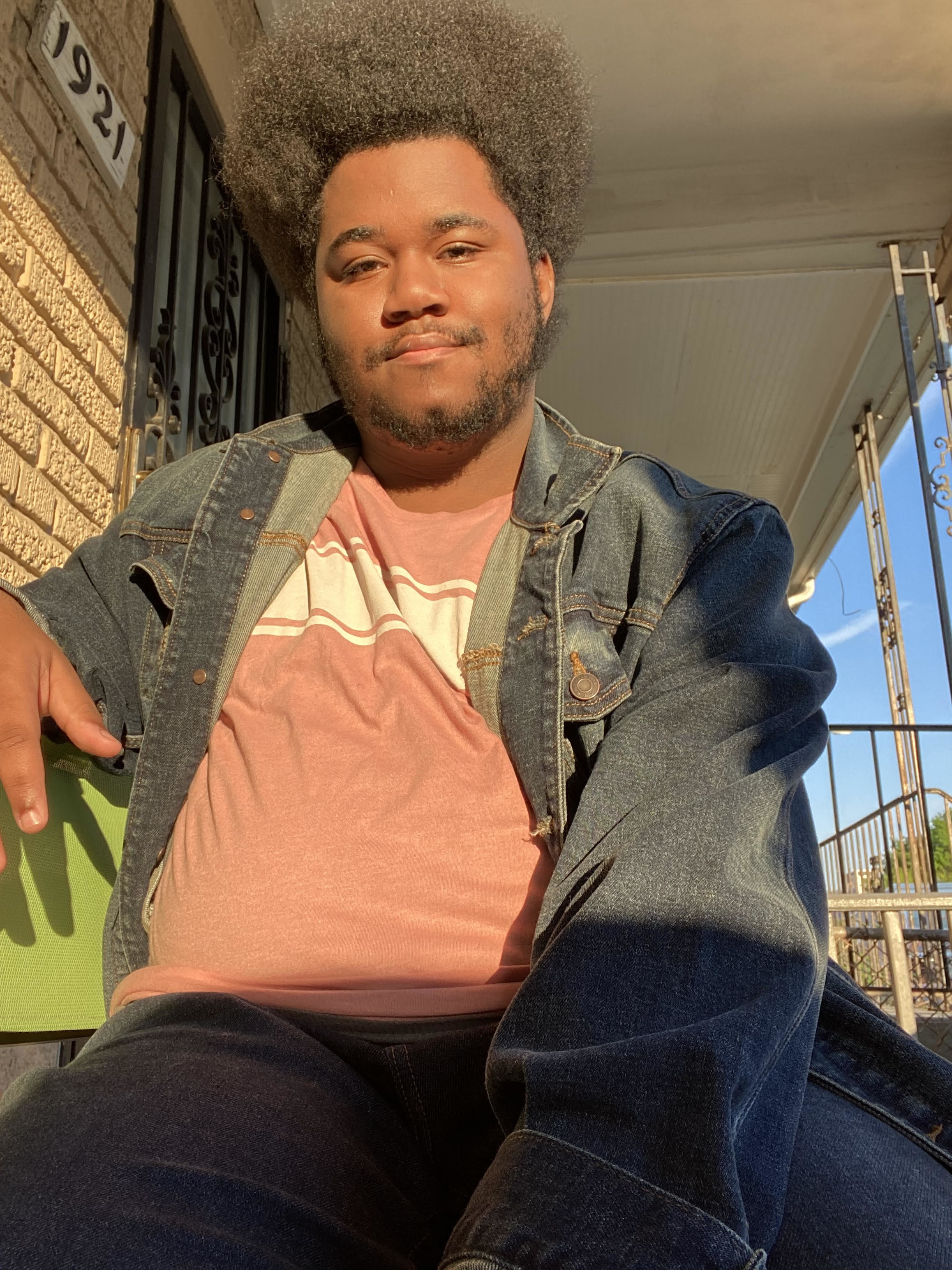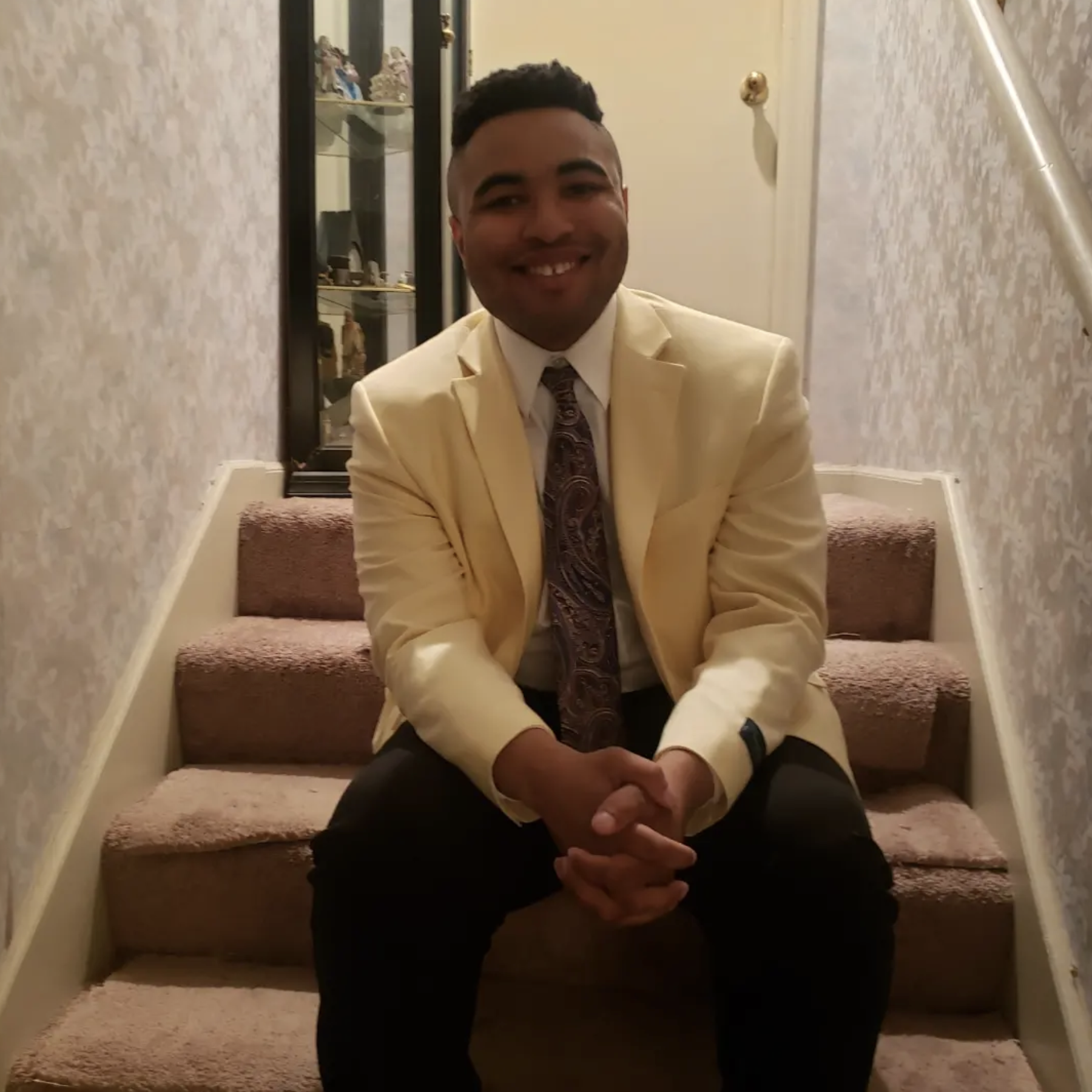
Alex Crawford used to hate being recorded and getting his picture taken. That was until TikTok became one of his “special interests,” which is an intense fascination that brings happiness and fulfillment to autistic people like Crawford.
“Now I’ll press the record button and stim away if I want to,” Crawford told BuzzFeed News. Stimming is a repetitive behavior, such as humming or hand flapping, that some autistic people do to help regulate their emotions or find enjoyment. Crawford, 19, used to hide stimming to avoid making others feel uncomfortable, often at the expense of his mental health.
Depression and anxiety drove Crawford to pick at his nails until they bled. But ever since creating his own TikTok account in December 2020 (which has over 55,000 followers), he’s been able to manage his urges, learning how to paint his nails instead and share it with his online friends.
“I hope people seeing me be me freely online helps them be comfortable being themselves whether that's in person or on a TikTok account, like me,” he said.
Autistic creators are raising awareness about neurodiverse communities
Crawford isn’t alone. He joins a growing online community of neurodivergent people who turn to social media to share what it’s like living in a neurotypical world, dispelling misconceptions one TikTok at a time. And the benefits are manifold.
Several autistic creators told us the app has helped them promote autism acceptance, make lifelong friends, and improve their communication and social skills, the latter of which have been especially important for Crawford, who’s nonspeaking. He communicates with others by typing on his iPad using AAC (augmentative and alternative communication) apps, which he used to answer our questions via email.
“I went from thinking I was alone with my struggles and experiences to seeing many who understand me,” Crawford said. “It was an overwhelming experience at first, but watching [autistic people] and communicating with them became the best thing to come from TikTok. I've learned more about myself through them.”
Special interests and goals aside, autistic creators emphasize that autism looks very different from person to person, and that those differences deserve to be celebrated and understood. TikTok, for many in the community, has given them and others the space to do just that, and in a way that encourages more diverse voices to speak up than traditional autism campaigns or mass media allow.
“I’m seeing a lot more marginalized creators, people who are traditionally left on the outskirts of autistic communities, having more of a voice and presence on a very direct and easy to connect to level,” said Noor Pervez, community engagement manager for the Autistic Self Advocacy Network, a nonprofit organization run by and for autistic people that fights for disability rights.
“There’s something profoundly beautiful about the rapid-fire ability to just connect with a lot of people in real time,” he said.
The confidence boost they never knew they needed
Autism is a developmental condition that affects how people learn, communicate, and interact socially with others and their surroundings. Usually diagnosed before age 3, symptoms can vary widely; about 40% of children with autism do not speak.
Autism can affect communication in many ways, but social media, because of its accessibility, has given autistic people a platform to comfortably connect with others.
TikTok doesn’t have the demands of in-person interactions, “which can sometimes be challenging if you have social differences or if you communicate differently,” said Micah Mazurek, director of the University of Virginia’s Supporting Transformative Autism Research program.
Crawford said he didn’t have friends or a community before joining TikTok, partly because he struggles with understanding social cues and needs more time to process information, which “makes face to face conversations uncomfortable for others.” But now, “I am more confident with communication knowing I can take my time and the community understands my needs and disabilities,” Crawford told us.
TikTok’s focus on short-form video also benefits autistic creators who might want to rewatch their content to ensure they’re OK with how they’re being presented, Mazurek said. “It might take some of the pressure off and give people a way to practice and get some feedback on how they're coming across to others.”
Nicole Parish, 25, who likes to share fun facts about insects and teach others about autism, says the TikTok format has been helpful. She said she’s gotten better at communicating with others by rewatching her videos and responding to comments.

Doing so has taught her “that it’s OK to be authentically myself and autistic,” Parish told us.
TikTok followers have helped autistic influencers in other ways, including revenue and donations that can help them gain independence.
Parish was able to move into her own apartment for the first time with the help of her 2.5 million followers, many of whom purchased her art and sent her essentials like dishes that she couldn’t afford on her own.
“My support team would not have been able to help me in the way that TikTok has,” Parish said. “The support of the community felt like a huge housewarming party which kind of inspired them to help other creators. It was super awesome.”
TikTok is helping autistic people learn more about themselves

Although Trevour Jackson-Carpenter’s autism was diagnosed at age 6, he said he didn’t have a clear understanding of it until he joined TikTok over a decade later.
“TikTok has allowed me to not only express myself more, but also unmask more because throughout high school I was pretty reserved,” the 20-year-old told BuzzFeed News. “At the time I didn’t really have a lot of autistic friends, but I’ve been learning more about who I am myself as an autistic person. Seeing all these other creators and their points of view has really changed how I view life.”
In fact, one doctor told his mom that he’d be “nonverbal” for the rest of his life. “Look at me now,” Jackson-Carpenter said. “I’m talking to you on this call.” (He told us speech therapy during early childhood helped him immensely.)
For some people, watching these content creators has led to a better understanding of autism and what it looks like to be diagnosed later in life.
Shifra David’s brother was diagnosed with autism as a toddler, so David grew up with a “peripheral understanding of the autistic experience through watching him and his experiences in school and social groups.”
But it wasn’t until David’s coursework in pediatric speech therapy touched on autism that they realized they may also be autistic. Watching videos of other adults receiving autism diagnoses later in life was a tipping point, said David, 24, who just received their diagnosis in December.
“Every autistic person’s personal experience is going to be very different,” David said, adding that it’s important for neurotypical people to understand that because content from autistic creators may differ drastically, “it doesn’t mean they are more or less autistic.”
TikTok offers a sense of community for autistic and other neurodiverse people

Before TikTok, many autistic creators said they had no way to connect with other autistic people. Over time, the platform has introduced them to people who understand them and their needs.
“Ever since I started talking about autism in my videos, I’ve met some very incredible and nice autistic people who are very talented and wise and who have become some of my greatest friends,” said Timothy Boykin, 23, whose TikTok account has 90.8K followers.
With the goal of connecting and uplifting BIPOC autistic creators, Jackson-Carpenter formed a group chat with some of his new, close TikTok friends. One of them inspired him to rekindle his passion for Pokémon, one of his special interests.
While neurotypical people may not find online friendships fulfilling, autistic people may actually prefer those kinds of relationships, Mazurek said, because they don’t involve in-person stressors, like having to read social cues or dealing with strong sensory stimuli.
A 2017 study found that using Facebook was associated with higher-quality friendships among autistic teens but not among their non-autistic peers. The Yale researchers suggested autistic people “socially compensate through online interaction” because of their “unique communicative style, rather than for being socially anxious.”
“Before TikTok, it was a lot of isolation because there wasn’t a place where I can be honest about things that I’m struggling with,” David said, particularly spaces for autistic women and girls and adults who were diagnosed later in life.
Now, one of David’s goals as a creator is to fill those gaps by posting content that explores what late-diagnosed adults can do to make their lives a bit easier. “How do you be a person with autism? How do you advocate for yourself when this is a very new thing to you? That has been my goal since I started,” David said. “Even if my content helps one person, that’s enough for me.”
TikTok has a history of suppressing disabled voices
While the experiences of those we spoke to were overwhelmingly positive, the internet is still the internet, and so there will always be some negative experiences, no matter who is behind the screen.
One problem: TikTok’s algorithm. The app works via its recommendation system that offers videos to users’ For You Page based on their interactions, such as what videos they comment on and like.
But some creators, like Boykin and Jackson-Carpenter, said the algorithm isn’t on their side, sometimes “silencing” Black, disabled, and other “different” voices.
“Sometimes I feel like I don’t belong on this app,” said Boykin, whose primary goal on TikTok is to bring attention to the intersectionality of being Black and autistic.
Boykin shared some instances when TikTok flagged his videos for harassment and bullying after calling other creators out for their racist or otherwise insensitive content.
In 2019, TikTok admitted to practicing a set of policies that suppressed content created by autistic, gay, and fat people, as well as those with Down syndrome, facial disfigurements, and other disabilities, according to reporting from the German site Netzpolitik. The company told the outlet it did this to protect these creators from cyberbullying, and admitted it was wrong and that those policies are no longer in place.
“These aren’t issues that are unique to [TikTok]. It’s definitely something we see as a repeated ongoing issue across different platforms,” Pervez said. “It’s just kind of part of the playing field, which is unfortunate.”
When asked about the experiences autistic creators are facing today, a TikTok spokesperson told BuzzFeed News, “TikTok is a place where a diversity of voices can shine authentically, and we work hard to foster the welcoming, inclusive platform where many autistic creators have found an outlet for self-expression, advocacy, and connection."
Cyberbullying is still an issue
As any content creator has learned, it can be tough to deal with a constant stream of comments and engagement, both positive and negative, Mazurek noted, but people with disabilities face higher risks of cyberbullying.
While Crawford doesn’t let mean comments get to him anymore, he said in the beginning some messages would make him sad. In fact, before he joined TikTok, he considered creating a joint account with his sisters because he needs help during the video-making process, but they ultimately decided against it after noticing how poorly other sibling accounts on the app are treated. Crawford said his family wanted to avoid being accused of using his autism “to receive clout.”
“I still get some people who comment saying my mom or my sister make me do TikTok, but I have my family filter out mean comments for me,” he said. “I don't want to see it. I make what I want to make and when I want to make it.”
Parish told us she knew posting videos on the internet would attract hate comments, but when some started coming her way, she got creative.
For every bully she blocks, she earns one point. Once she collects enough points, she gets herself something cool, like a new live beetle, to add to her collection.
“There’s always going to be people who will bully or be mean, but there’s always going to be a larger group of people that will support, help, and appreciate what you have to say,” Parish said. “You just need to find them.”
TikTok allows for a new kind of autism education and acceptance
For many autism advocates, TikTok offers an exciting space for a new kind of advocacy, one that allows creators to contribute directly to the conversations that involve them and speak to others in ways that are more accessible to more people.
“It’s more organic,” said Pervez, adding that he feels autistic cultural norms are much better understood on TikTok than anywhere else. “TikTok makes it real in a way that mass media and mass messaging about autism very frequently doesn’t — the reality that autistic adults do exist, and that you can both need resources and support and also live a complete happy, full adult life.”
It’s common for neurotypical people to assume all autistic individuals function or think at a child’s level, but that couldn’t be further from the truth. It’s a misconception Crawford has had to deal with, but one that he’s been able to dispel through his videos.
“I enjoy comments saying I remind someone of an autistic loved one, but I get frustrated when I’m put into a box because somebody thinks I should behave like their 5 year old because we are both autistic,” Crawford said. “I have interests and hobbies that are similar to children's, but that doesn't mean I should act like a small child.
“I am 19 years old, I work five days a week, I’ve graduated high school, and I enjoy inappropriate jokes,” he said. (Crawford helps his mom at his sister’s indie bookstore called Books and Bakery in Iowa, the first in the state to receive its Better Community Sensory Inclusive Certification, which ensures the space accommodates the needs of neurodivergent people.)
TikTok’s accessibility is also changing how autistic people learn about their own communities.
“Before TikTok, I felt like I was getting more information from the parents of autistic people than autistic people themselves,” Boykin said.
Now, the diverse set of voices on the platform has helped him to not feel “othered,” which is particularly important for Boykin, who said he grew up believing the bullies at school who called him “the r-word.”
“I felt sad because I felt like those bullies were right,” Boykin said.
“But my mom helped me by telling me that I am loved and I am worth something. And that I can do a lot of creative things, even though I am disabled, even though I am autistic.”
